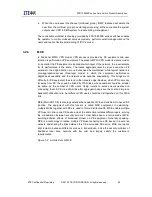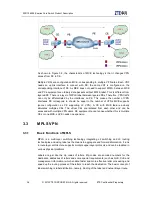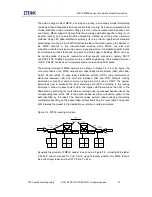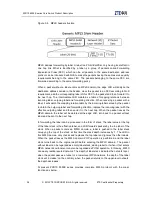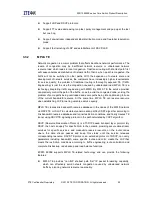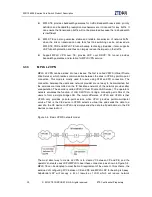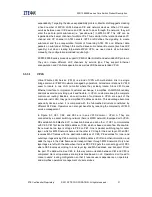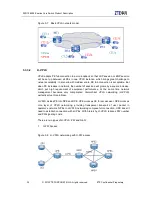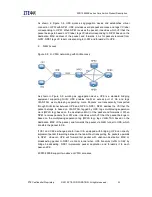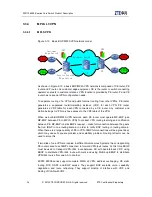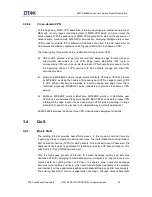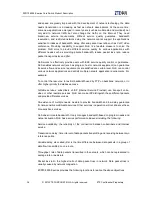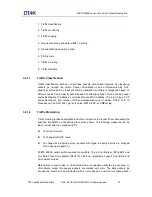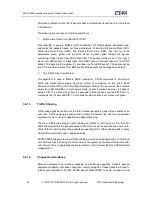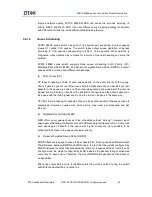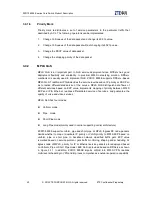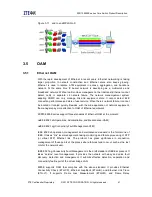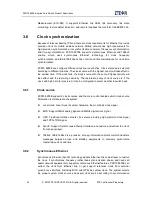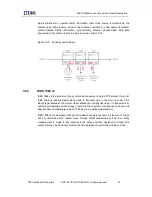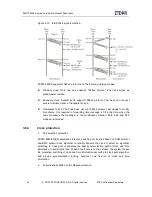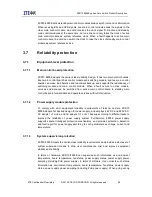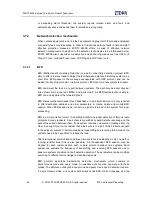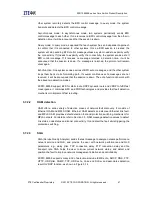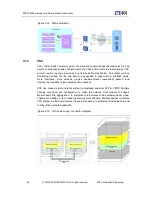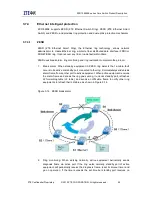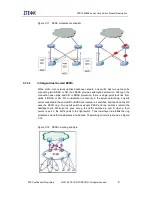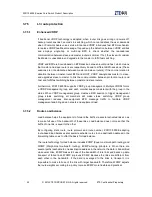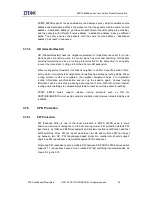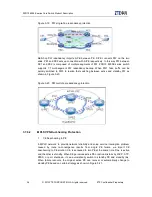
ZXR10 8900E series Core Switch Product Description
ZTE Confidential Proprietary
© 2013 ZTE CORPORATION. All rights reserved.
39
improve network quality. ZXR10 8900E WRED can sense the services including IP
priority, DSCP and MPLS EXP. It can set different early dropping strategy for packets
with different priorities to provide differentiated dropping feature.
3.4.1.5
Queue Scheduling
ZXR10 8900E series switch has each of its physical port supporting 8 output queues
(queue0~7) called CoS queues. The switch takes output queue operation at ingress
according to CoS queues corresponding to 802.1p of the packets. When network is
congested, many packets may compete for resources. Queue scheduling can solve the
problem.
ZXR10 8900E series switch supports three queue scheduling: Strict Priority (SP),
Weighted Round Robin (WRR), and Dynamic Weighted Round Robin (DWRR). 8 output
queues at the port can adopt different schedulings.
Strict Priority (SP)
SP takes scheduling of data of each queue based on the exact priority of the queue.
Firstly it gets the packet out of the queue with the highest priority and sends it out until
packets in the queue are send out. Then it sends packets in the queue with the second
highest priority. Similarly, it sends all the packets in the queue and then sends packets in
the queue with the third highest priority. And the rest can be done in the same way.
SP offers first processing for packets of key services so that quality of the key services is
guaranteed. However, queues with lower priority may never get processed and get
starved.
Weighted Round Robin (WRR)
WRR offers every queue chances to be scheduled without “starving”. However, each
queue gets scheduling at different time with different weight (the proportion of resources
each queue gets). Packets in the queue with higher priority are more possible to be
scheduled than those in the queue with lower priority.
Dynamic Weighted Round Robin (DWRR)
DWRR offers every queue chances to be scheduled too. Each queue has different weight.
The difference between DWRR and WRR lies in the fact that the weight configured by
DWRR indicates the bytes that scheduled every time for 8 queues at the port with the unit
of kbyte, while the weight configured by WRR indicates the packets that get scheduled
every time for each queue. Therefore, the size of DWRR data packet has little influence
on bandwidth.
802.1p tag covers data priority. If the data enters the port has no 802.1p tag, the switch
will distribute a default 802.1p value to it.
Содержание ZXR10 8900E series
Страница 1: ...Operator Logo ZXR10 8900E series Core Switch Product Description ...
Страница 2: ......
Страница 10: ......

